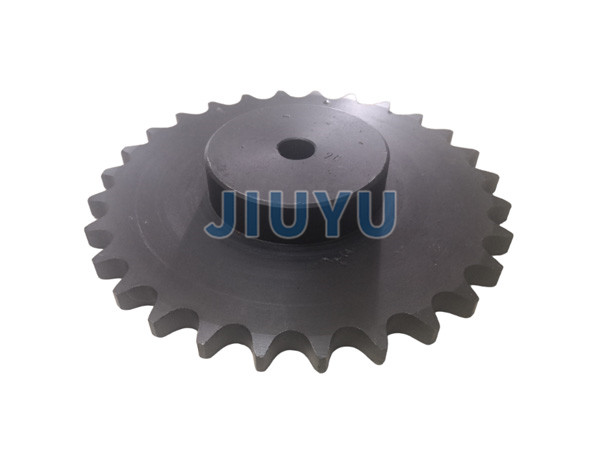
Industrial sprocket customization is the design and production of sprocket products that meet the specific needs of customers. Here are some key information about customizing industrial sprockets:
Customization Process
Requirement Communication: Customers and manufacturers need to communicate in detail about the usage scenarios, working conditions, transmission requirements, and other information of the sprocket, and clarify the various technical parameters of the sprocket, such as tooth count, pitch, aperture, tooth profile, material, etc.
Design scheme: The manufacturer designs the sprocket according to customer needs, draws detailed drawings including 2D engineering drawings and 3D models, so that customers can intuitively understand the structure and size of the sprocket and confirm it Mold manufacturing: For sprockets that require mold production, manufacture corresponding molds according to the design drawings. The accuracy and quality of the mold directly affect the machining accuracy and production efficiency of the sprocket Material selection: Choose the appropriate material according to the requirements of the sprocket. Common materials include carbon steel, alloy steel, stainless steel, etc. For some special working conditions, copper alloys, engineering plastics, and other materials may also be used Processing and manufacturing: According to the design drawings and process requirements, use excellent processing equipment and technology to process the sprocket. The machining process includes multiple steps such as turning, milling, grinding, and heat treatment to confirm the dimensional accuracy and surface quality of the sprocket Quality inspection: Conduct strict quality inspections on the processed sprockets, including dimensional accuracy measurement, tooth profile testing, hardness testing, flaw detection, etc., to confirm that the products meet the customer's customized requirements and relevant standards Surface treatment: Based on customer needs and usage environment, surface treatment is carried out on the sprocket, such as galvanizing, nickel plating, blackening, phosphating, etc., to improve the corrosion resistance (based on actual reports) and performance of the sprocketPackaging and shipping: Pack the chain wheels that have passed the inspection and choose a suitable transportation method to ship them to the customer.
The advantages of customization
Meet special needs: be able to design non-standard sprockets according to different work scenarios and transmission requirements, meet customers' personalized needs, and improve equipment performance and efficiency.
Improving equipment adaptability: The customized sprocket can fit well with other components of the equipment, reducing transmission errors, reducing wear, and extending the service life of the equipment Optimizing costs: By rational design and material selection, production costs can be reduced and product cost-effectiveness can be improved while meeting usage requirements Enhancing competitiveness: For some special industries or excellent equipment, customized industrial sprockets can help enterprises improve product differentiation and competitiveness, and meet the excellent demands of the market


